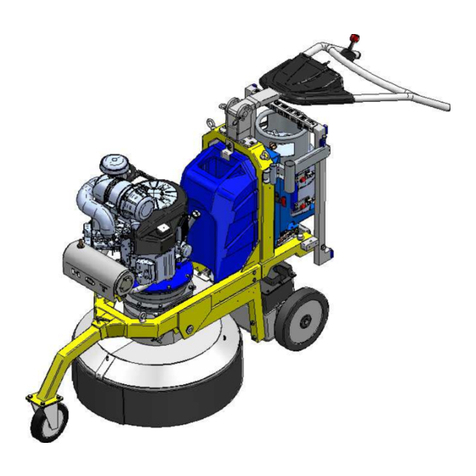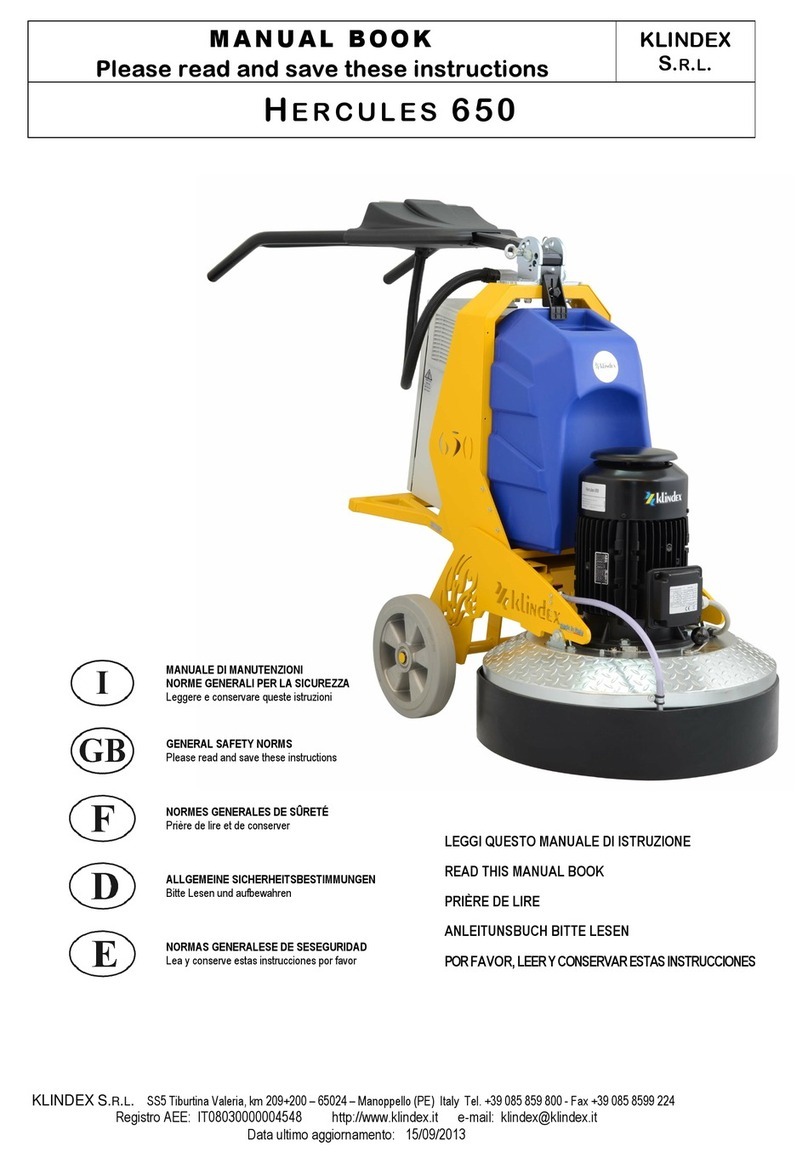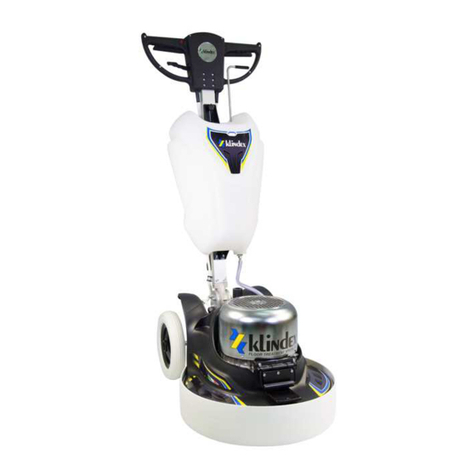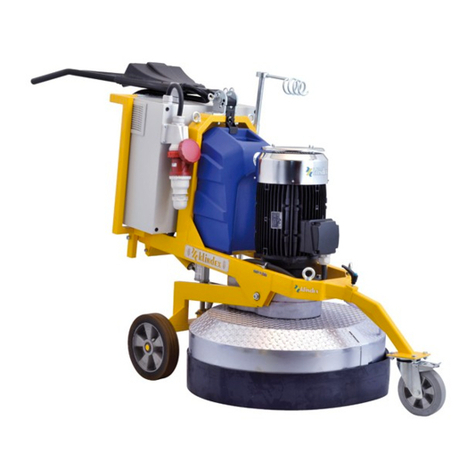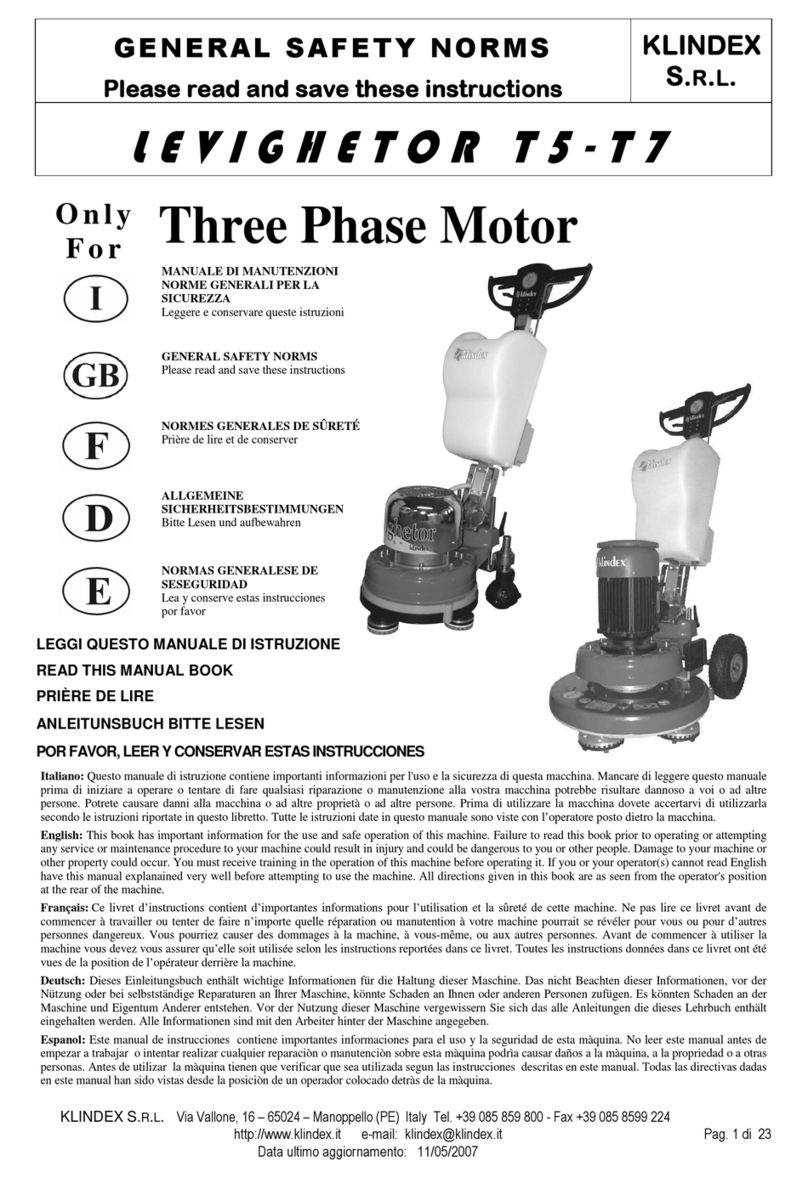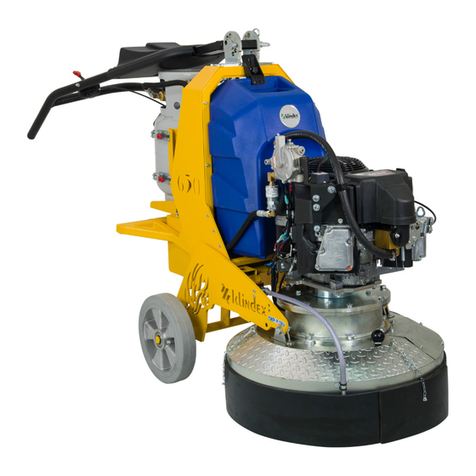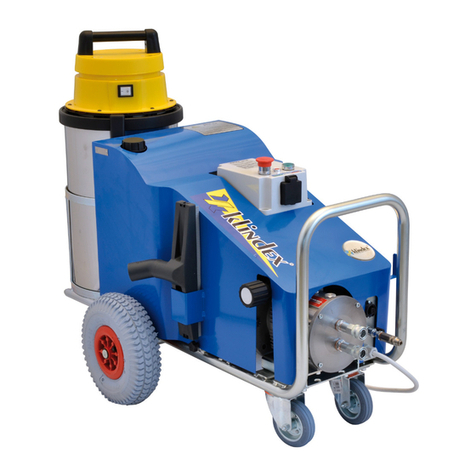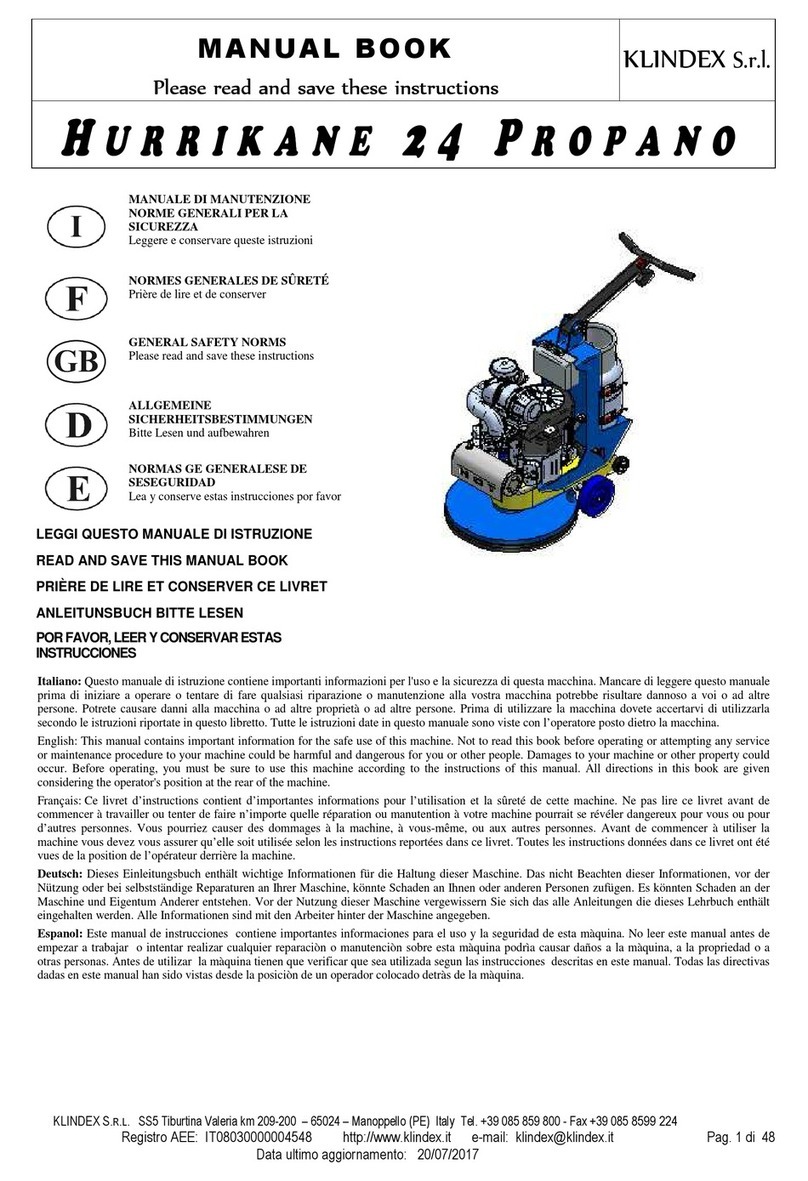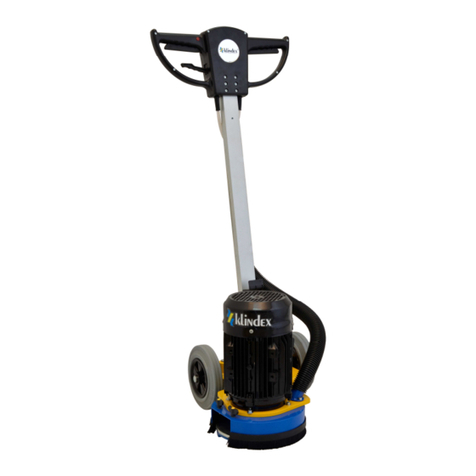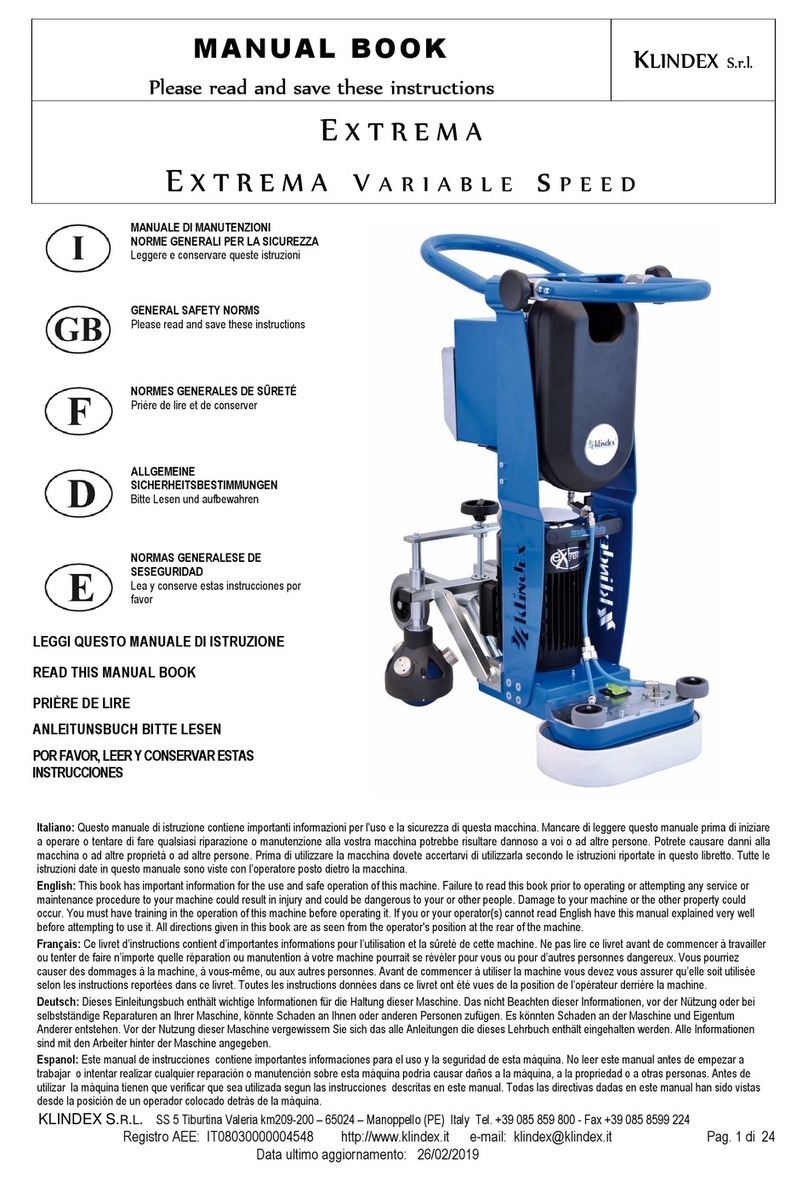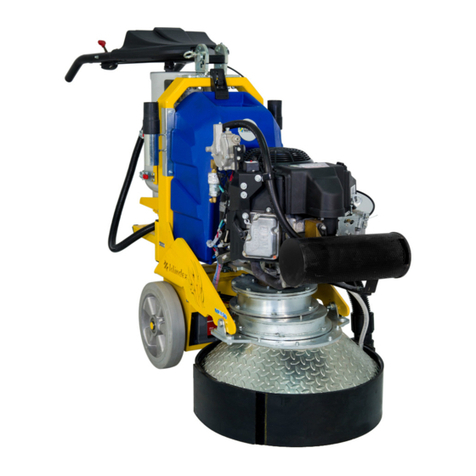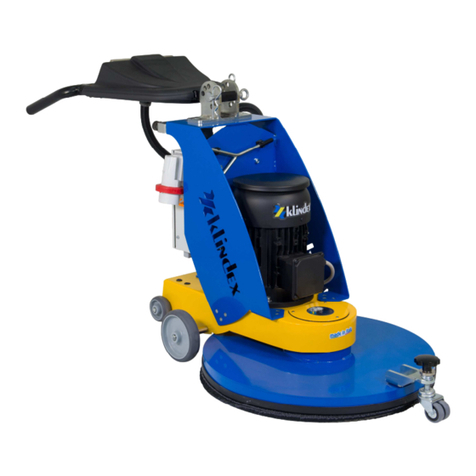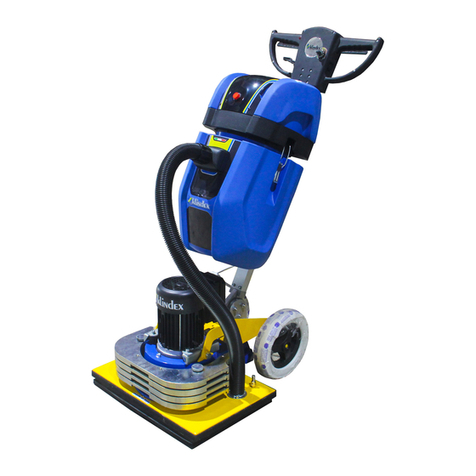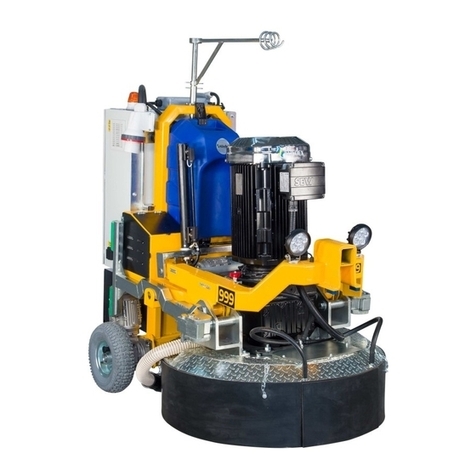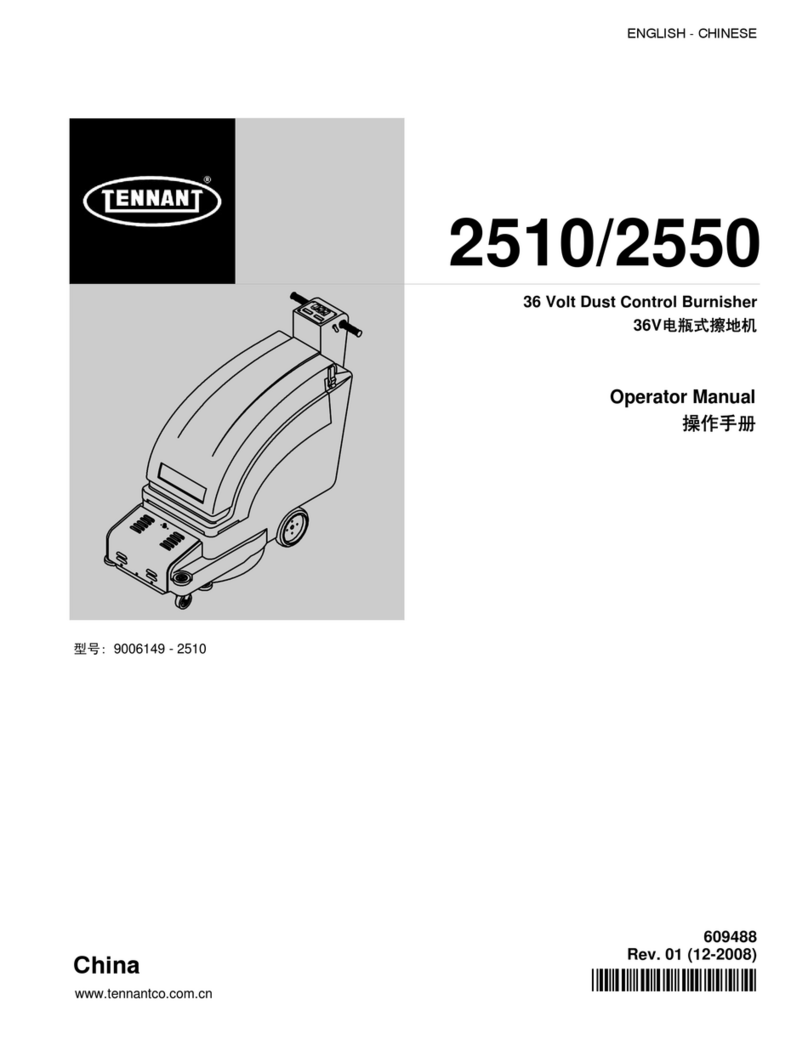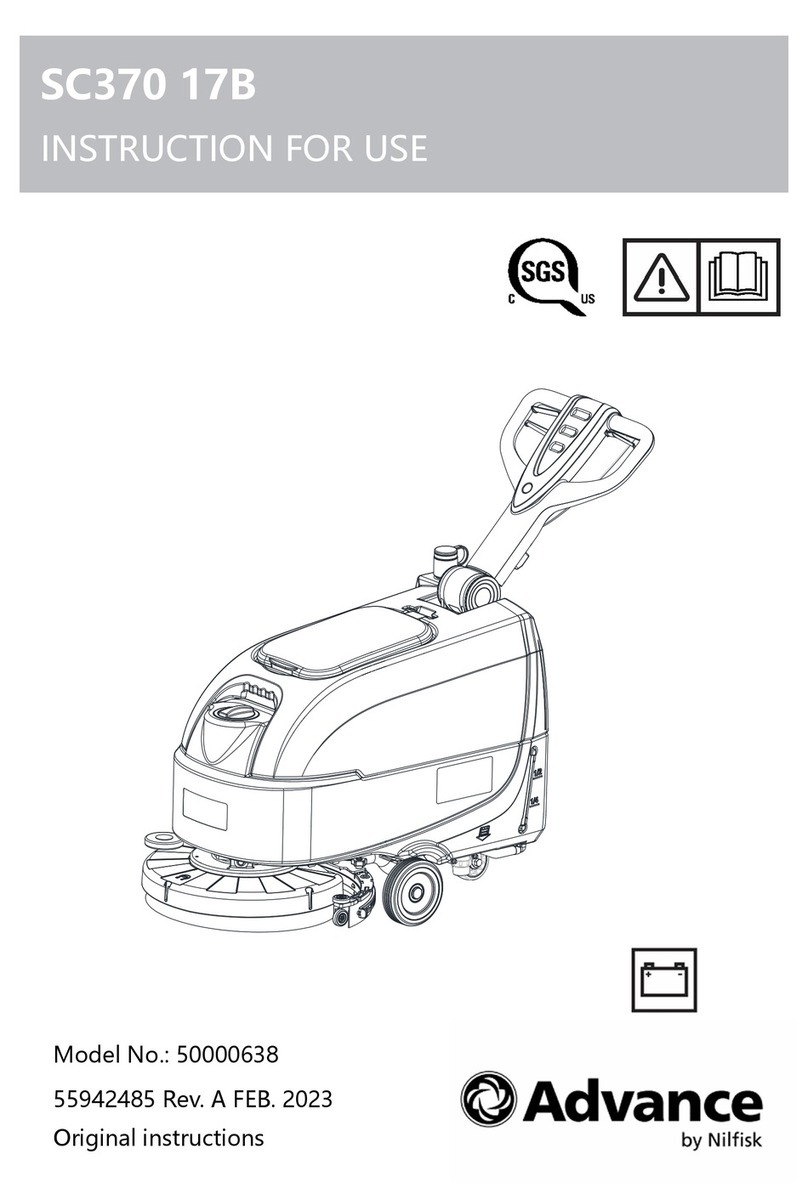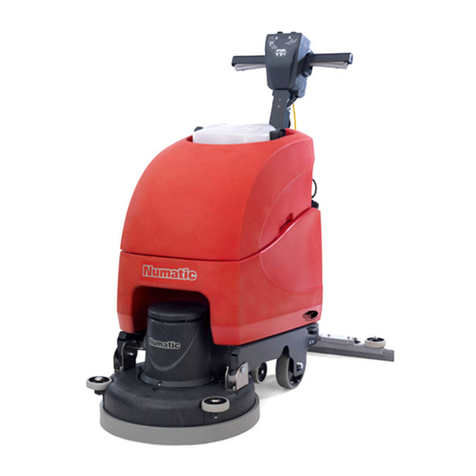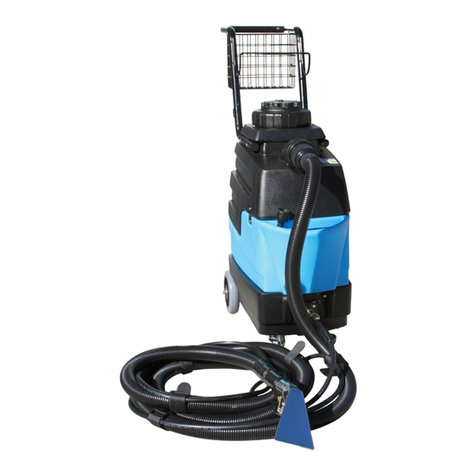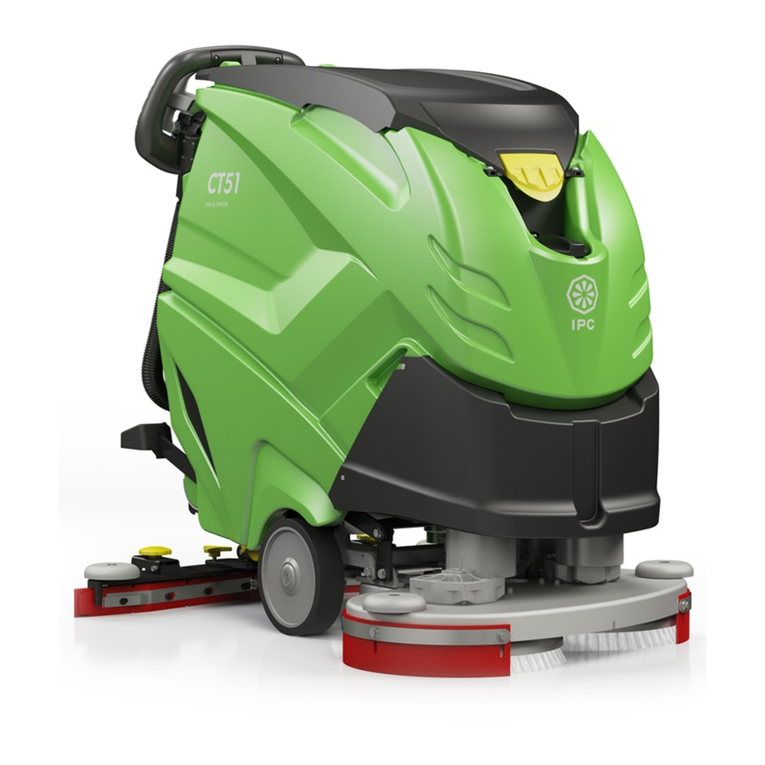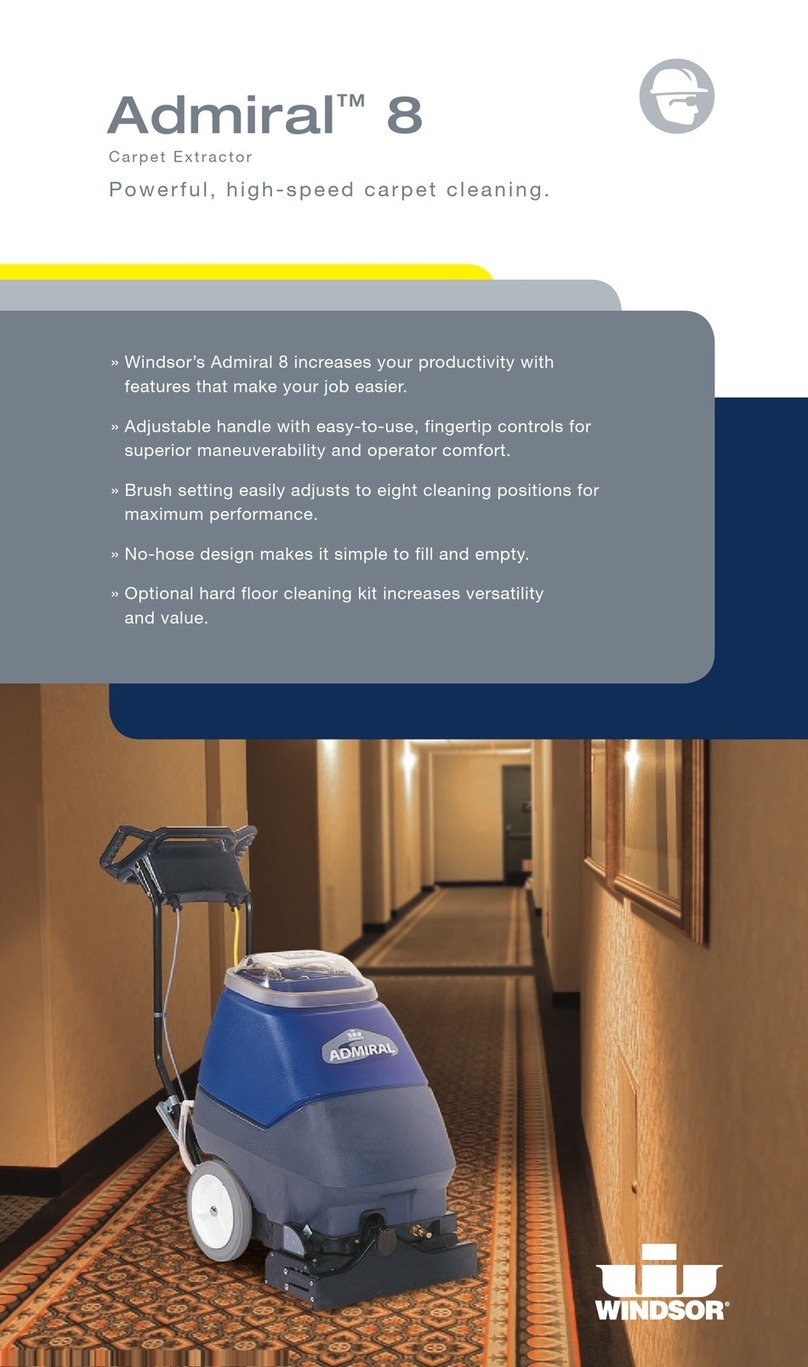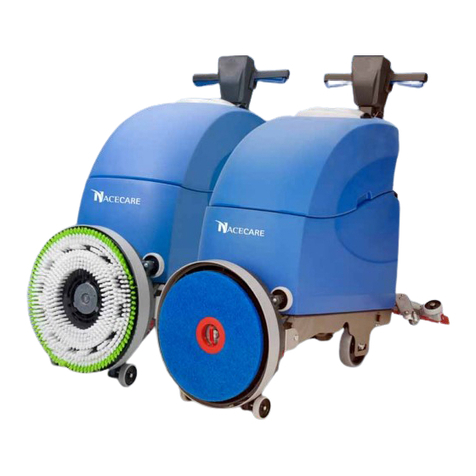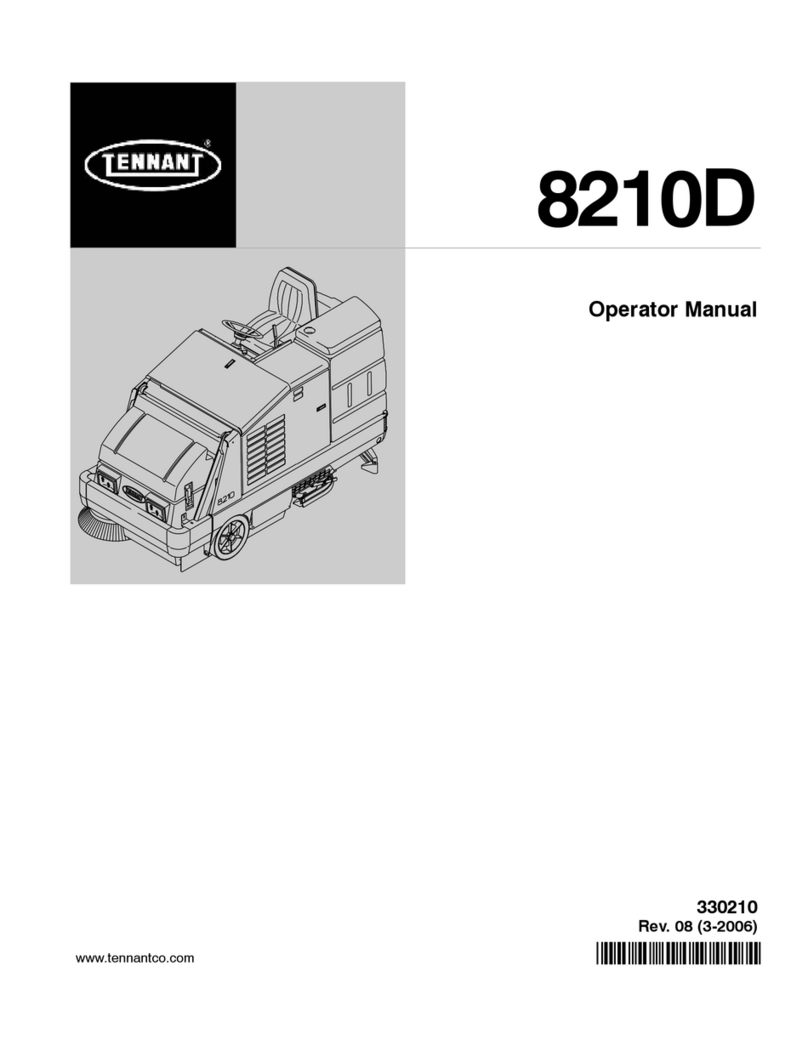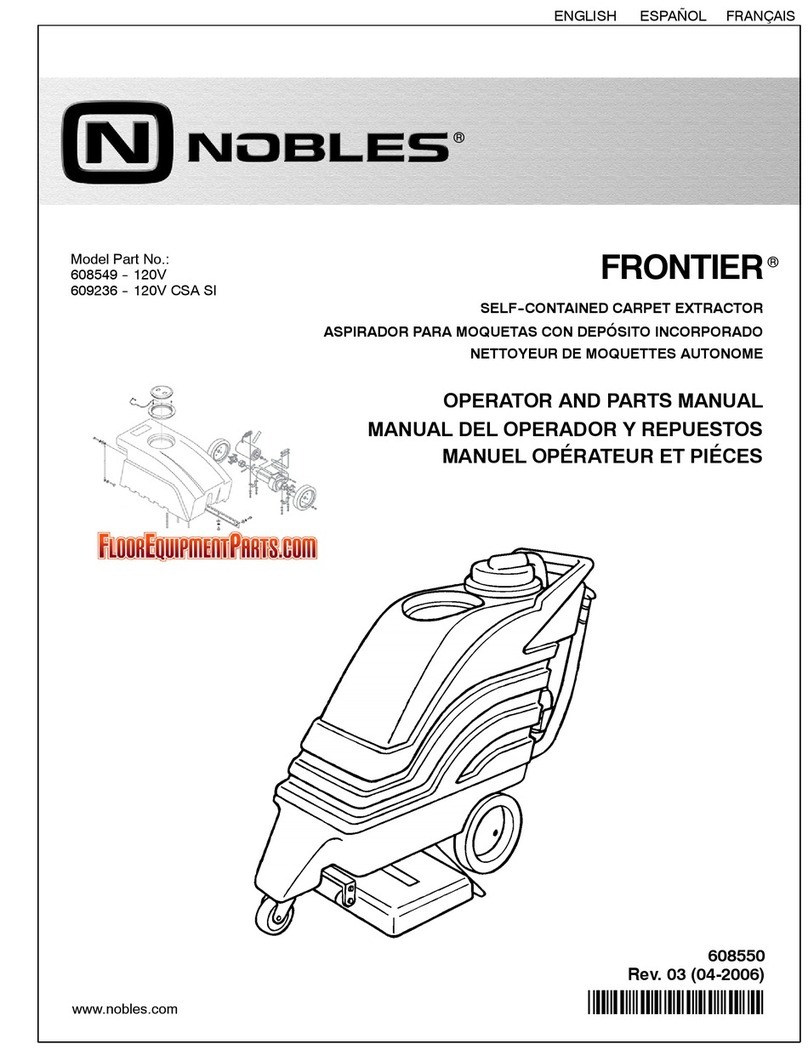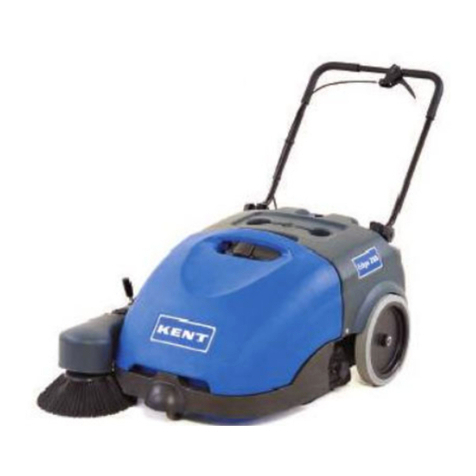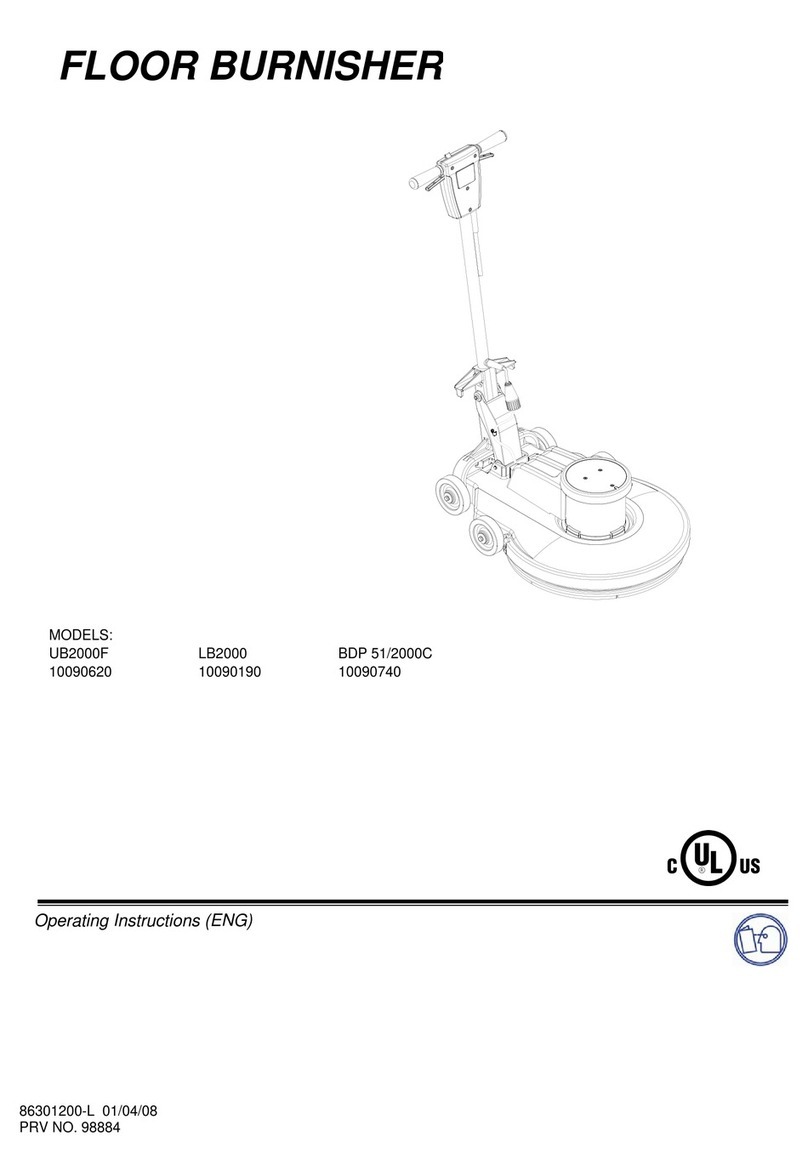
INSTRUCTIONS POUR LA SECURITÉ
AVERTISSEMENT : Ne pas lire et ne pas observer toutes les indications de danger
pourrait causer de graves blessures ou la mort. Lire et observer toutes les indications
de danger que vous trouvez dans ce livret.
AVERTISSEMENT : Ne pas lire et ne pas observer toutes les indications de danger
pourrait être dangereux pour vous, pour d’autres personnes ou causer des dommages
à la propriété. Lire et observer toutes les indications de danger que vous trouvez dans
ce livret d’instructions ou sur la machine.
AVERTISSEMENT : Ne pas lire et ne pas observer toutes les indications de prudence
pourrait résulter nuisible pour la machine ou à la propriété. Lire et observer toutes les
indications de prudence que vous trouvez dans ce livret d’instructions ou sur la
machine.
DANGER : Ne pas lire et ne pas observer le LIVRET D’INSTRUCTIONS avant de
commencer à travailler avec cette machine ou tenter n’importe quelle réparation à la
machine pourrait causer des dommages physiques à vous ou à d’autres personnes ou
à la propriété.
Vous devez vous familiariser avec la machine avant de commencer à l’utiliser.
DANGER : Travailler avec une machine qui n’est pas complètement ou parfaitement
assemblée, pourrait causer des dommages aux personnes ou à la propriété. Ne pas
travailler avec la machine jusqu’à ce qu’elle soit complètement ou parfaitement
assemblée. Contrôler la machine avant de commencer à travailler.
Utiliser cette machine seulement comme décrit dans ce livret d’instructions. Utiliser
seulement les attaches et les pièces de rechange originales.
DANGER : La machine peut provoquer des explosions quand elle est utilisée près de
matériaux ou de vapeurs inflammables. Ne pas utiliser cette machine près de
carburants, poudres combustibles, solvants ou autres matériaux inflammables.
DANGER : Utiliser la machine avec un câble électrique endommagé pourrait causer
un dangereux court-circuit. Ne pas utiliser le câble électrique pour transporter ou tirer
la machine. Tenir le câble électrique loin des superficies réchauffées. Ne pas brancher
à la prise de courant avec une prise non réglementaire ou en forçant sur le câble.
DANGER : De dangereux court- circuits pourraient se produire si la manutention ou les
réparations viennent effectuées sur une machine qui n’a pas été débranchée de la
prise de courant.
Débrancher la machine de la prise de courant électrique avant de commencer toute
réparation ou manutention de service.
AVERTISSEMENT : En travaillant avec une machine sans observer toutes les
étiquettes, symboles de danger et ainsi de suite.... pourrait résulter dangereux pour la
vie. Lire toutes les étiquettes et regarder tous les symboles de danger avant de
commencer à travailler, s’assurer que toutes les étiquettes sont collées ou fixées sur la
machine. Demander à votre distributeur de remettre toutes les étiquettes si celles-ci
devaient manquer.
AVERTISSEMENT : Les composants électriques peuvent subir un court-circuit si
exposés à l’eau ou à l’humidité. Tenir les composants électriques au sec. Ranger
toujours la machine dans un endroit sec.
AVERTISSEMENT : Utiliser cette machine pour déplacer ou bouger d’autres objets, ou
pour monter dessus, pourrait résulter dangereux pour la vie des personnes ou
endommager la machine. Ne pas utiliser cette machine comme un escabeau ou
comme une chaise. Ne pas permettre qu’elle soit utilisée comme un jouet, prêter une
particulière attention si vous devez obligatoirement l’utiliser près d’ enfants. Ne pas
permettre qu’elle soit utilisée par des enfants.
DANGER : Déplacer ou modifier des parties de cette machine peut causer des
blessures et/ou des dommages. Tenir mains, pieds, cheveux, doigts et toute partie du
corps loin des ouvertures ou des parties de la machine en mouvement.
DANGER : Le Fabriquant ne peut être considéré responsable si la machine est
utilisée à des fins non explicitement indiquées dans ce livret d'instructions.
DANGER : Ne pas utiliser la machine en manière impropre. Ne pas utiliser la machine
en position retournée. Faire attention à ce que eau ou poussière dangereuse n’entre
pas à l’intérieur de la machine.
DANGER : Ne pas utiliser la machine comme masseuse pour votre corps ou pour le
corps des autres, c’est dangereux !
DANGER : Vous pouvez provoquer un court-circuit si vous prenez ou insérez la prise
électrique avec les mains mouillées.
DANGER : Ne pas laver la machine avec un jet d’eau. Ne pas tremper la machine
dans l’eau ou dans d’autres liquides.
DANGER : Ne mettre aucun objet dans les fentes. Ne pas utiliser la machine avec les
fentes obturées. Tenir la machine libre de poussière, cheveux et de tout autre chose
qui peut réduire le flux d’air.
AVERTISSEMENT: Un grand soin doit être appliqué quand on travaille sur les
escaliers ou dans les endroits exigus car on peut causer des dommages à l'operateur.
AVERTISSEMENT : Les composants utilisés dans l’emballage(sac en papier ou en
plastique etc...) peuvent être dangereux. Tenir loin de la portée des enfants et/ou des
animaux.
ATTENTION: L'utilisation de la machine pour emplois autres que ceux indiqués
par le fabricant, exonère celui-ci de toute responsabilité civile ou pénale
LE FABRIQUANT NE PEUT ETRE CONSIDERÉ RESPONSABLE : en cas dommage
causé à personne ou à propriété à cause d’une utilisation non correcte et non
autorisée de la machine. Toutes utilisations différentes de celles indiquées sur le
présent livret peut constituer un danger, donc doit être évité. La machine ne doit pas
être utilisée pour des emplois qui ne sont pas indiqués dans le livret d’instructions.
MANUTENTION ET RÉPARATIONS DOIVENT ÊTRE EFFECTUÉES : seulement par
un personnel qualifié. Les pièces qui éventuellement doivent être changées doivent
être remplacées seulement par des pièces de rechange originales. Aucune
responsabilité ne peut être attribuée au fabriquant pour dommages éventuellement
causés par des machines avec pièces remplacées par des pièces de rechange non
originales.
DANGER : L’utilisation de la machine pour n’importe quel usage non spécifié dans ce
livret d’instructions peut être dangereux et doit etre évité.
TUBES ET PARTIES ASPIRANTES : doivent être tenus loin du corps et spécialement
des oreilles, des yeux, de la bouche, du nez et autres parties délicates du corps.
DANGER : Si la machine est dotée de filtres en papier et/ou en étoffe, ne pas laisser la
machine sans les filtres. Cela pourrait être dangereux pour les personnes ou pour la
machine.
NE PAS LAISSER : la machine en fonction sans votre surveillance.
SI VOUS AVEZ BESOIN DE CABLES DE RALLONGE : assurez-vous que le
cabre rajouté soit compatible avec la machine et réglementaire.
NE PAS NETTOYER en vaporisant de l’eau.
NE PAS METTRE la machine dans l’eau ou dans d’autres produits.
TENIR LA MACHINE propre.
TENIR les brosses et autres accessoires en bonne condition.
REMPLACER aussitôt toute partie endommagée.
ASSUREZ-VOUS que l’endroit où vous travaillez soit libre d’obstructions et d’autres
personnes.
ASSUREZ-VOUS que la place de travail soit bien éclairée.
QUAND VOUS TRAVAILLEZ, PRENEZ LES PRECAUTIONS NECESSAIRES POUR
GARANTIR la sûreté de l’opérateur et de toutes autres personnes qui peuvent être
proches, par exemple :
-lavant ou nettoyant mettre des chaussures qui ne glissent pas,
-ponçant utiliser des vêtements protectifs, des lunettes de sûreté, et des
protections pour les oreilles.
-Nettoyant à sec utiliser une masque anti- poussière.
